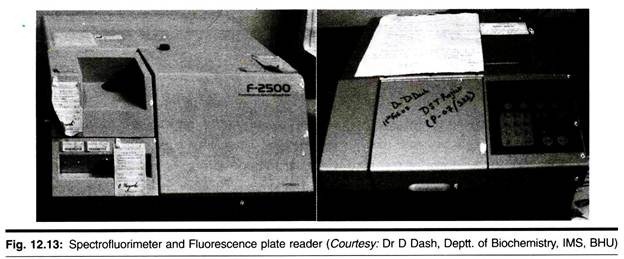In this article we will discuss about the structure of salivary glands of human with its suitable diagram.
Secretory unit of salivary gland is an acinus. There are two types of acini in the salivary glands namely serous and mucous type.
Parotid gland is mostly made up of serous type, sublingual is predominantly mucous type, sub-mandibular is both, but more of serous than mucous type.
Each acinus is lined by glandular epithelium secretion of which enter the lumen which later on continues as intercalated duct (Fig. 5.4). A serous acinus contains cells, the nucleus of which is more towards the base and they have zymogen granules. These granules are precursors of salivary enzyme ptyalin which is also known as salivary amylase.
Mucous acini have cells which contain mucinogen granules which are precursors of mucin. These granules do not take up stain easily and hence appear translucent under normal hematoxylin stain.
In submanidular gland, another type of acini known as seromucous acini are present. In this type, there is mucous acinus, on top of which serous cells are placed. The salivary glands have profuse blood supply.
As for the duct system, each acinus drains into the intercalated duct. The intercalated ducts of various acini drain into striated ducts. These ducts are so- called because their epithelium possesses numerous infolding at the base and hence appear striated. They also have numerous mitochondria; several striated ducts unite to form an excretory duct. Excretory ducts join to form the main collecting duct.
The duct of each parotid gland, known as Stenson’s duct and this opens into the mouth opposite the upper 2nd molar tooth.
The duct of each submandibular gland, known as Wharton’s duct, and this opens into the mouth by the side of frenulum lingue.
From the sublingual gland, 5-15 ducts open into the floor of the mouth and these ducts are known as ducts of Rivinus.
Nerve Supply:
The acini, myoepithelial cells and the blood vessels of salivary glands are well supplied by sympathetic and parasympathetic nerve fibers.
Parasympathetic:
These fibers are important because they are known as the secretomotor fibers to the salivary gland. On stimulation, they bring about (1) secretion from the glands and (2) increase the blood flow to salivary glands.
There are two nuclei in the medulla known as superior and inferior salivary nuclei. From the superior salivary nucleus, the secretomotor fibers for submandibular and sublingual glands take origin.
The preganglionic fibers travel in the chorda tympani nerve which is a branch of the facial nerve. The fibers of chorda tympanic nerve synapse in the submandibular ganglion. The postganglionic fibers supply the submandibular and sublingual salivary glands (Fig. 5.5).
From the inferior salivary nucleus, the preganglionic fibers for the parotid gland arise and travel in the tympanic branch of glossopharyngeal nerve. This nerve forms tympanic plexus and continues as the lesser superficial petrosal nerve.
The preganglionic fibers then synapse in the otic ganglion. From the otic ganglion, postganglionic fibers travel as the auriculotemporal nerve and supply the parotid gland. Since parasympathetic nerve is involved in the salivary secretion, the secretion can be blocked by atropine.
It is interesting to note that the chorda tympani (branch of VII) and IX cranial nerves carry taste sensations from the tongue. The deep association between taste and salivation is very well known.
Sympathetic:
Preganglionic nerve fibers take origin from the lateral horn cells of T1, T2 segments of spinal cord. They relay in the superior cervical ganglion from where the postganglionic fibers take origin and reach the glands along the blood vessels supplying the gland.

